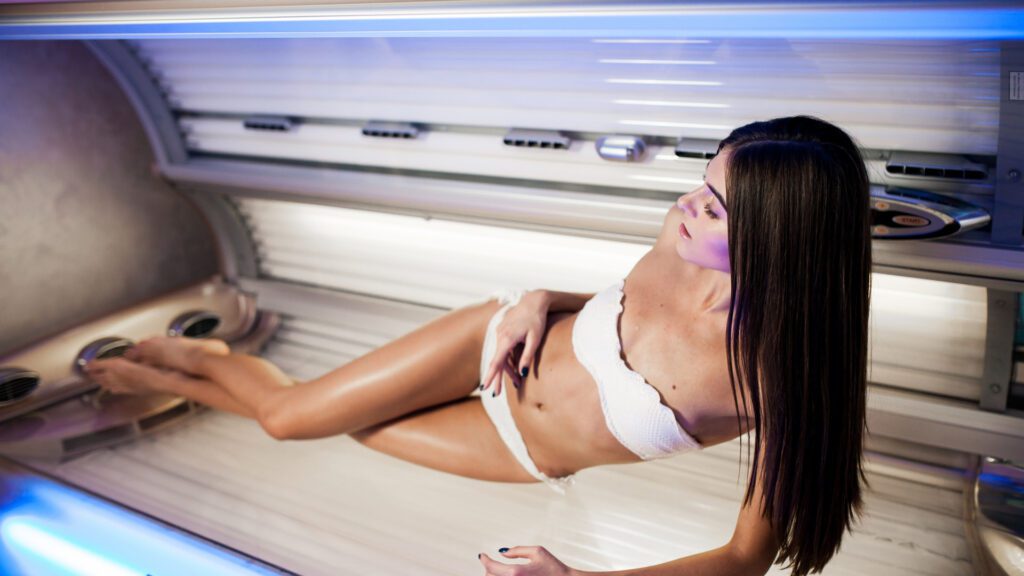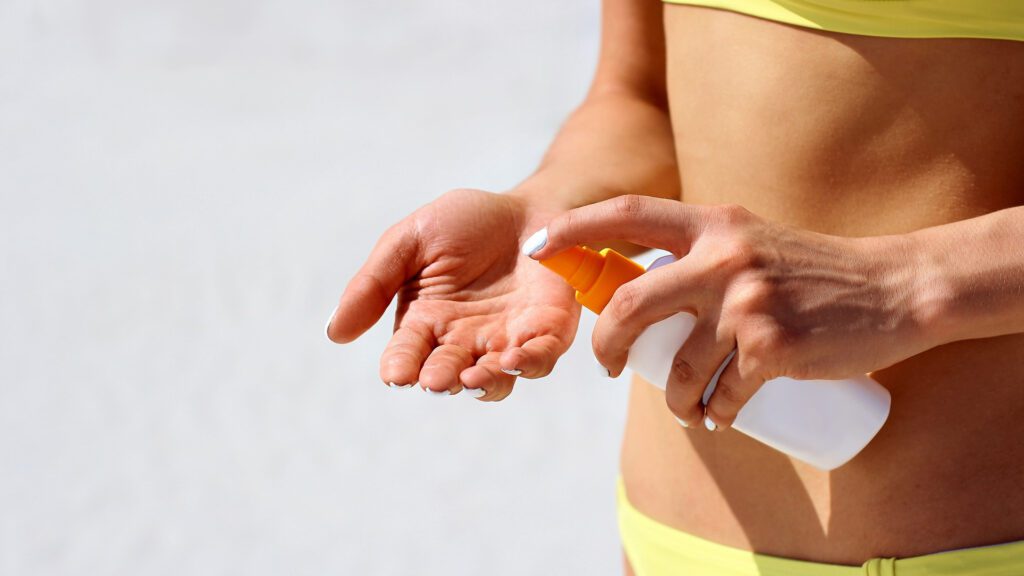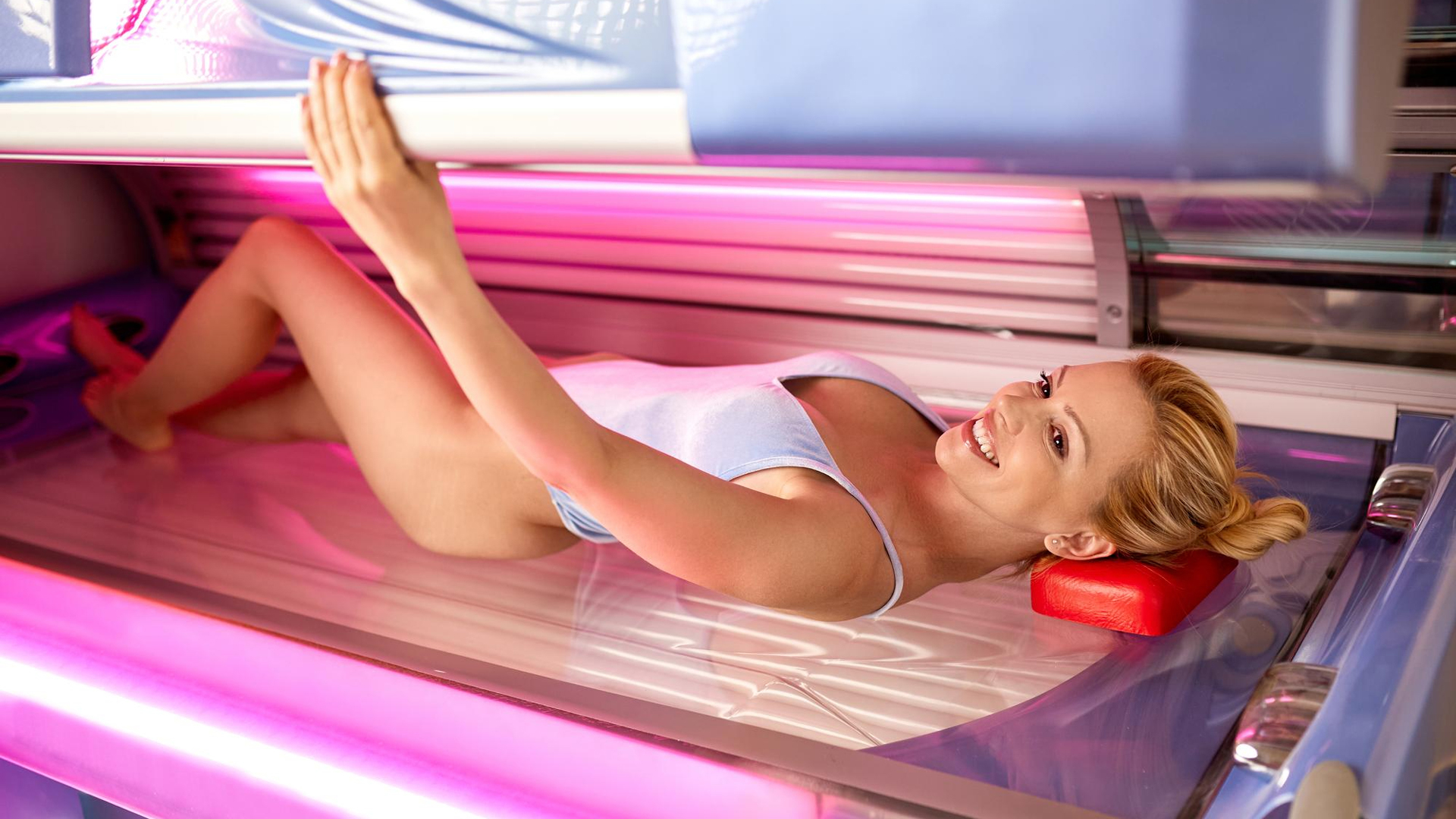If you are considering using a tanning bed just because of the current trends, hear me out once, as it may not be the best option for your health! Especially if you don’t want to end up looking like an Ed Sheeran doppelganger.
Understanding How a Tanning Bed Works
Tanning beds emit ultraviolet (UV) radiation, which stimulates melanin production in the skin—the pigment responsible for giving skin its color.
Do Tanning Beds Make You Orange?
When used properly, tanning beds can provide a bronzed look similar to natural sun exposure.
However, you must keep in mind that overexposure or improper use can lead to uneven tanning or even sunburn, which may contribute to an orange appearance.
So, to answer your question, yes, it is possible. UV tanning can, in fact, give your skin an orangy hue that isn’t very attractive if you ask me.
Factors That Contribute to an Orange Hue

Skin Type
Individuals with lighter skin tones may be more prone to an orange tint if they don’t tan evenly. Their skin may not produce enough melanin to achieve a natural-looking tan.
Type of Bulbs
Different tanning beds use various bulbs emitting different wavelengths of UV light. Some bulbs may produce a reddish or yellowish tint, affecting the result.
Cosmetics and Lotions
Many tanning products, such as bronzers and accelerators, can contribute to an orange hue. These products often contain DHA (dihydroxyacetone), which can react with the skin and create an orange tint, especially if not applied evenly.
Duration of Sessions
Spending too much time in a tanning bed can lead to over-tanning, creating an unnatural look. It’s important to follow recommended guidelines for exposure times based on your skin type.
How to Avoid the Orange Look In a Tanning Bed
Consider the lamp type and session duration to prevent an undesirable orange look.
A longer exposure to certain rays can lead to an unnatural hue. Additionally, a facial tanner designed specifically for the face can help maintain a more balanced tone.
Other Side Effects of Using a Tanning Bed
Studies show that tanning can increase the risk of developing serious health issues, such as skin cancer.
According to the American Academy of Dermatology, using tanning beds can significantly raise the risk of developing the two most common types of skin cancer: melanoma and squamous cell carcinoma.
Not only this, but the frequent tanning booth visits can be hefty on your pocket, too, due to the high price per tanning session.
Safer Alternatives

Did I scare you with those facts above? Unfortunately, it is the truth, but here are some alternatives that you can use to get that bronze glow without compromising the natural skin pigment and skin health.
Bronzers
Spray Tanning
Gradual Tanning Lotions
Natural Sun Exposure
Body Makeup
Frequently Asked Questions
Here are some commonly asked questions regarding a tanning bed experience that will clear any further questions you might be having.
Q: Do Tanning Bed Tans Look Natural?
Ans: Yes, they can look natural if done properly. You can achieve a healthy and natural-looking tan by choosing the right tanning lotion, following safe tanning practices, and maintaining your tan with moisturizing and exfoliating.
Q: Do Tanning Beds Make You Permanently Tan?
Ans: No, tanning beds do not make you permanently tan. The color of your tan will fade over time as your skin cells naturally shed with your age.
However, with regular tanning sessions and proper maintenance, you can maintain a healthy and natural-looking tan.
Q: Does using a tanning bed give you vitamin D?
Ans: Tanning beds aren’t good sources of vitamin D because they are unsafe and produce UVA light instead of UVB light, which is required for vitamin D production.
Moreover, board-certified dermatologists recommend that healthy adults get vitamin D from their diet — not tanning beds
Conclusion
In conclusion, tanning beds do not make you orange. However, several factors can influence the color of your tan, such as your skin type, the type of tanning lotion you use, the frequency and duration of your sessions, and the quality of the tanning bed.
If you can consider these factors, then go for a tanning bed; otherwise, I would suggest that you don’t.

